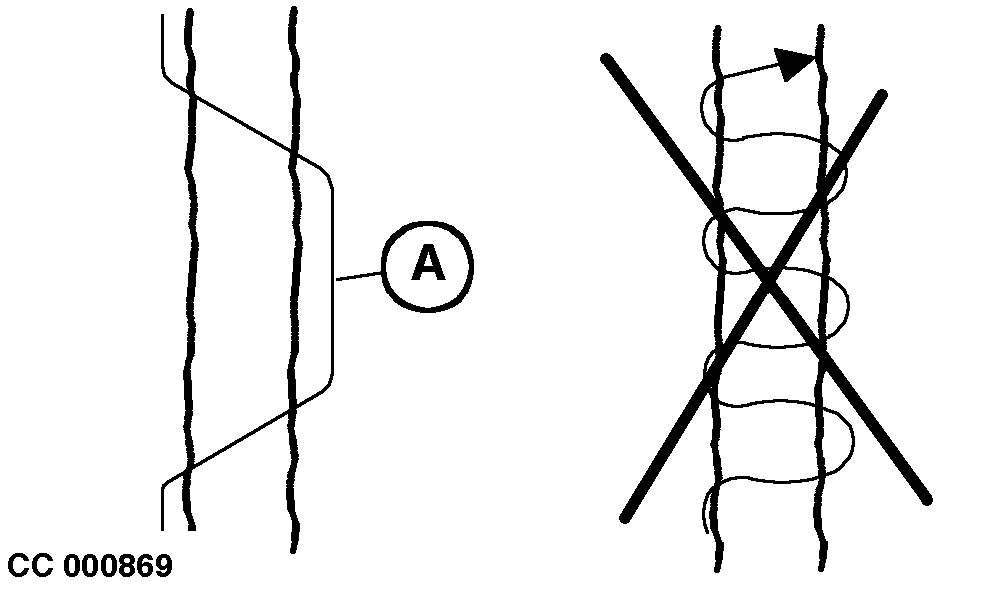Feeding the MaterialFull Pickup Width WindrowsThis is the ideal windrow width. This windrow should be even with little or no crown. Too much crown will result in barrel-shaped bales. Full-width windrows are desirable since no weaving or crossing the windrow is necessary. |
OUCC006,000032D -19-15FEB01-1/2 |
|
Narrow Windrows
Due to their self-cleaning tread, belts grip material and ensure a quick compact core formation. This design saves the operator to weave at the start of baling procedure. Once the core is formed (after 2 to 3 m; 8 to 10 ft of forward travel), start the weaving pattern to feed material alternately into the sides of the pickup. In case of baler operated without BaleTrak control monitor, crowd the material into one side of the pickup for 6 to 8 seconds. Then cross over the windrow and crowd material into the opposite side for the same period. Reduce the "hold" period (A) in heavy windrows and increase it in lighter windrows. NOTE: Another method is to watch the bale shape indicators until they start to move, then cross over to the opposite side. In case of baler operated with BaleTrak control monitor, refer to the information given in "Guideline to Form a Good Bale" in "Operating BaleTrak Monitor" section to correctly feed the material. Bales formed in this way will be more uniform than bales formed by continuously driving the tractor in a weaving pattern as shown. Continuous weaving results in excessive material being placed in the center of the bale, and may cause belt tracking problems. Medium-Sized WindrowsWhenever possible, avoid medium-sized windrows. When the operator will cross this type of windrow to feed the ends of the pickup, material will continue to be fed into the center. As a result, more material will be fed into the center of the bale than at the ends. This results in barrel-shaped bales. |
|
OUCC006,000032D -19-15FEB01-2/2 |
